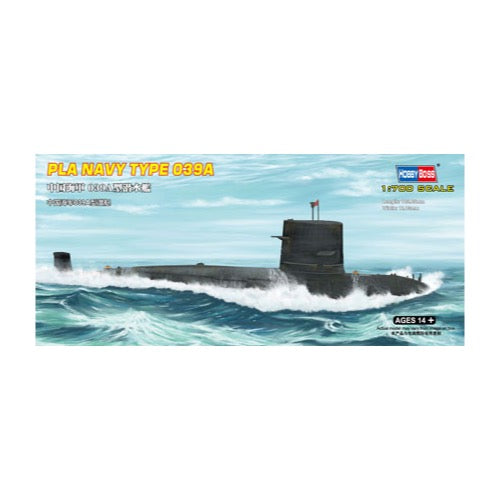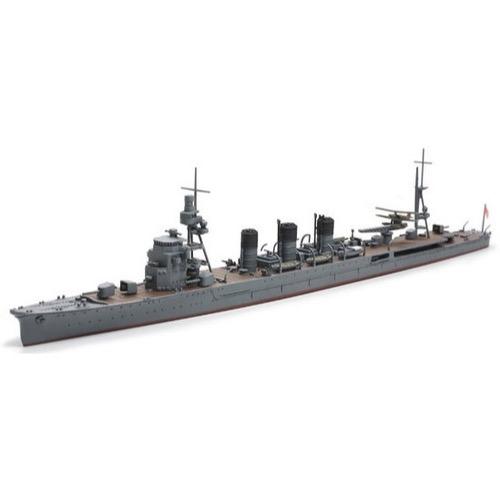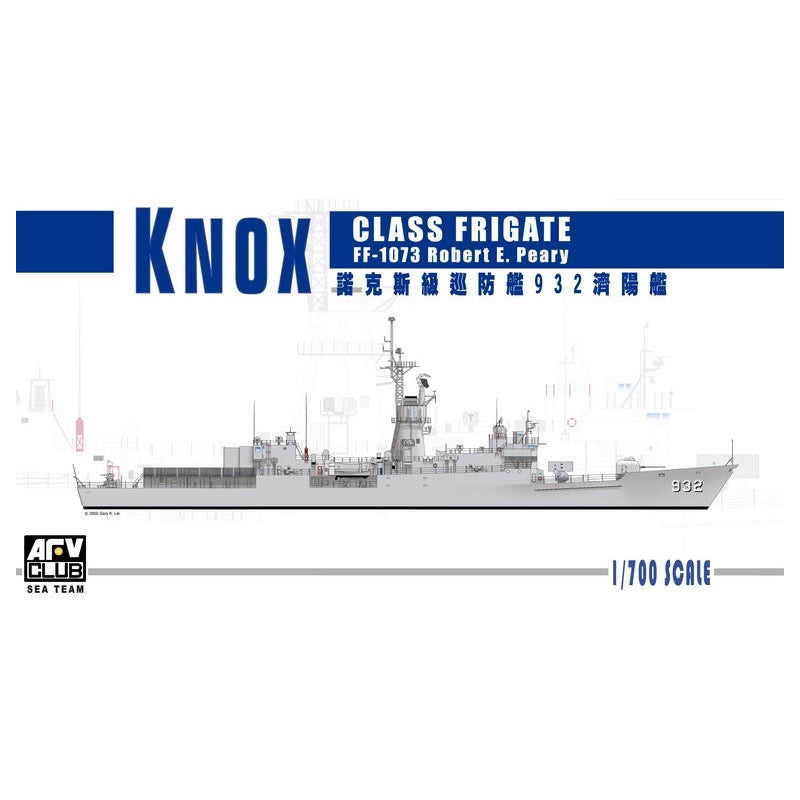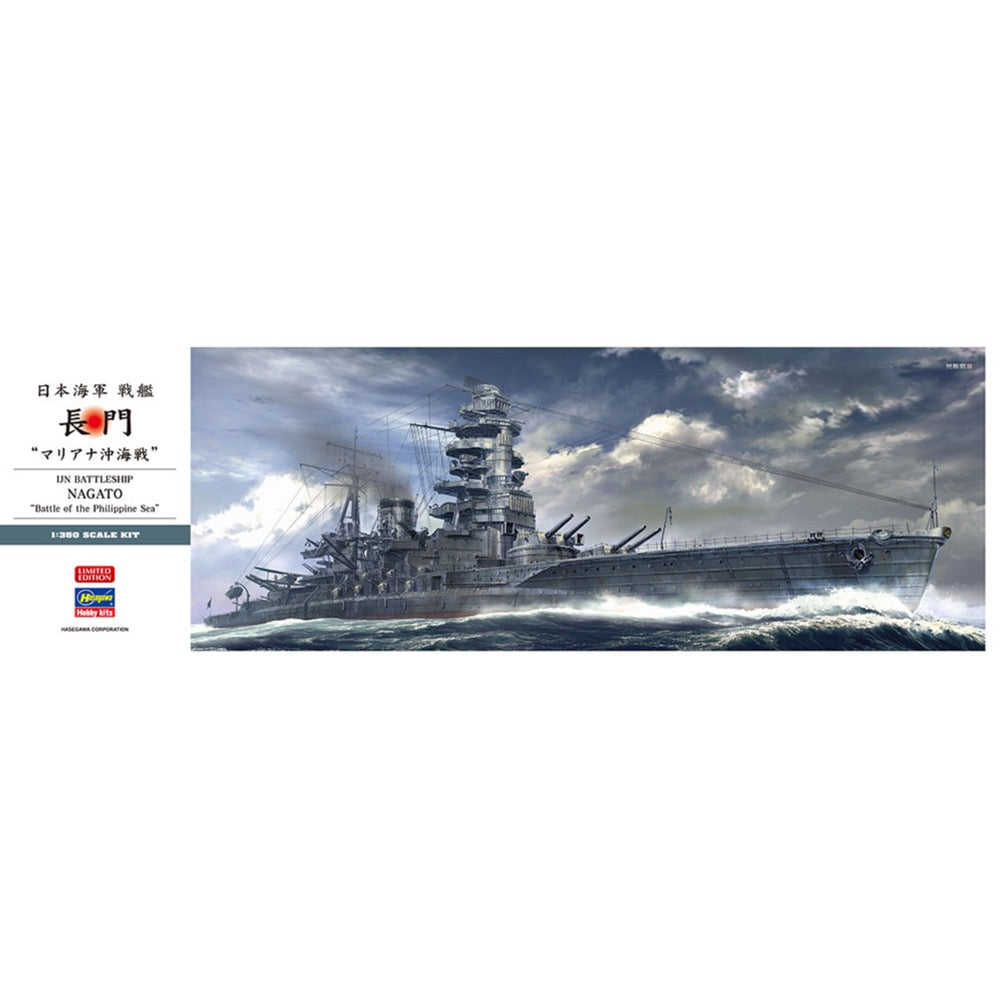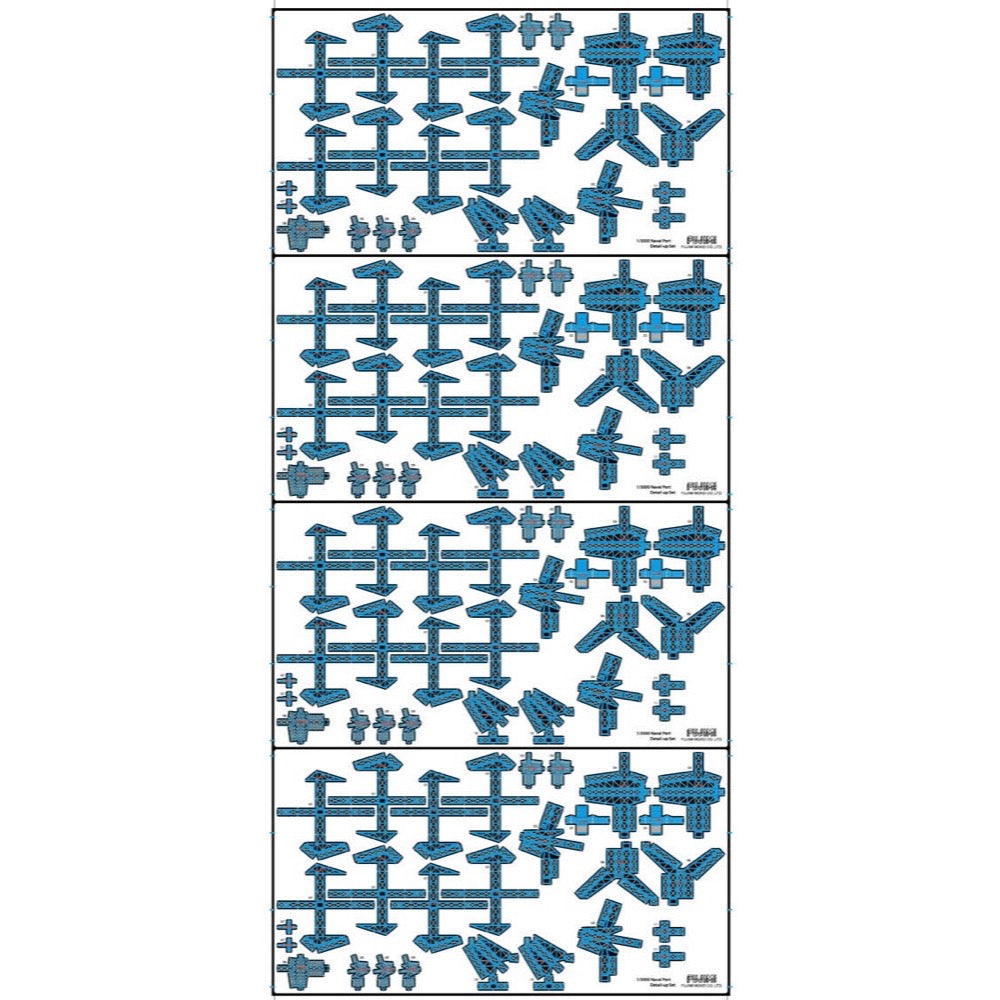
Heller HLL55078 1/400 Bismarck + Tirpitz TWINSET Starter Kit
54.00
$
<p>Tirpitz was a German battleship, the keel of which was laid in 1936 and launched in April 1939. The battleship entered the rope service in the German Navy (German Kriegsmarine) in February 1941. The ship was 254 meters long, 36 meters wide, and had a full displacement of 53,500 tons. Tirpitz's top speed was around 30-31 knots. The main armament was 8 380 mm guns in four twin turrets, and the secondary armament included: 12 150 mm guns or 16 105 mm guns.</p>
<p>The Tirpitz was the second Bismarck-class ship. It was ordered to replace in line the old battleship Schleswig-Holstein, completely obsolete in the 1930s - the same one whose volleys on Westerplatte started World War II in Europe. At the time of launching, Tirpitz was the largest German ship. It had good armor, and its main or secondary armament was in no way inferior to its counterparts on British ships. Shortly after entering service - in June and July 1941 - he insured the activities of the German troops as part of Operation Barbarossa, but no more serious actions against the Soviet fleet took place at that time. Following these actions, Tirpitz was forwarded to the base in Trondheim, Norway at the turn of 1941 and 1942, from where he began to operate against Allied convoys sailing with Lend-and-lease to Murmansk via the North Atlantic and Norwegian Sea. In July 1942, the mere departure from the port of the battleship Tirpitz led to the dispersion of the PQ-17 convoy, which was then decimated by German planes and U-boats. Undoubtedly, Tirpitz's presence in the northern waters was a great nuisance for the Royal Navy, and it involved 5-7 British battleships! It is no coincidence that the German ship was nicknamed "Lonely Lord of the North". Accordingly, in 1943-1944 the British undertook several actions with miniature submarines, which led to damage to the ship. However, Tirpitz was not sunk until November 12, 1944, as a result of a raid by heavy Lancaster-class bombers. </p>
<h3>Specification</h3>
<ul>
<li>Scale: 1:400</li>
<li>Parts: 327 +337 pieces</li>
<li>Packaging: 335 x 665 x 100 mm</li>
</ul>
<h3>Includes</h3>
<ul>
<li>Cement</li>
<li>Brush</li>
<li>Main paints</li>
</ul>
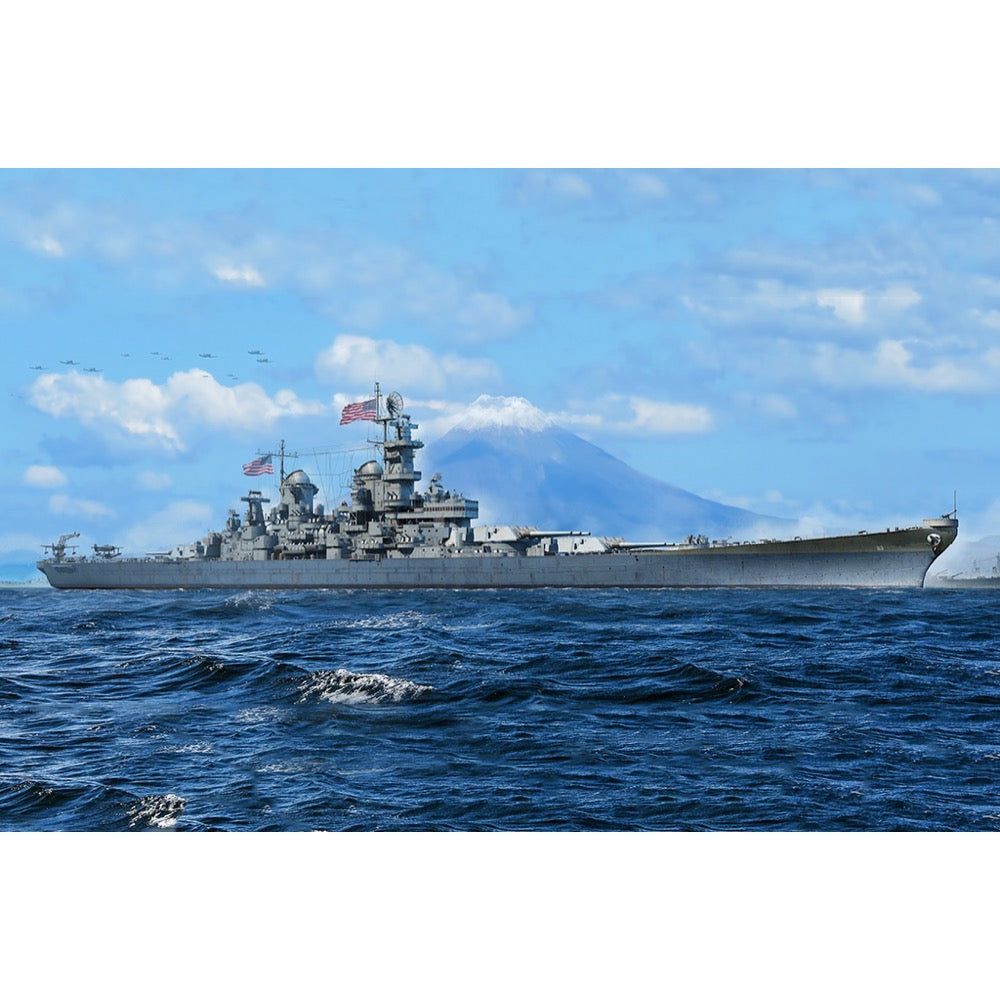
Trumpeter 06748 1/700 USS Missouri BB-63
29.00
$
<h3>Trumpeter 1/700 USS Missouri BB-63</h3>
<p>Missouri is the third ship, the United States Navy Iowa class battleship, was built in 1944, the same year in service. January 1945 the USS Missouri as flagship of the 3rd Fleet, formally joined the U.S. Pacific Fleet, took part in a few battles, including Iwo Jima, Battle of Okinawa and Japan native attack operations in February to July 1945. Missouri has witnessed the historic moment of the end of the Second World War - at 9:02 on September 2, 1945, the representative of Japan signed the unconditional surrender on the USS Missouri deck was parked at the Tokyo Bay, World War II a stop. Reserve sequestration of the battleship was commissioned in 1955, a number of occasions back and fully retired until 1992.</p>
<h3>Features</h3>
<ul>
<li>Hull made from multi-directional slide moulds.</li>
<li>Deck wood pattern finely rendered</li>
<li>Display stand included</li>
<li>Photo-Etched parts included</li>
</ul>
<h3>Specification</h3>
<ul>
<li>Scale: 1:700</li>
<li>Item Type: Plastic Model Warship Kit</li>
<li>Model Brief: Length: 386.5mm Beam: 47.5mm</li>
<li>Total Parts: 700+</li>
<li>Photo Etched Parts: 1 piece</li>
<li>Total Sprues: 16 sprues , hull and decks</li>
</ul>
<p> </p>
<p><br></p>
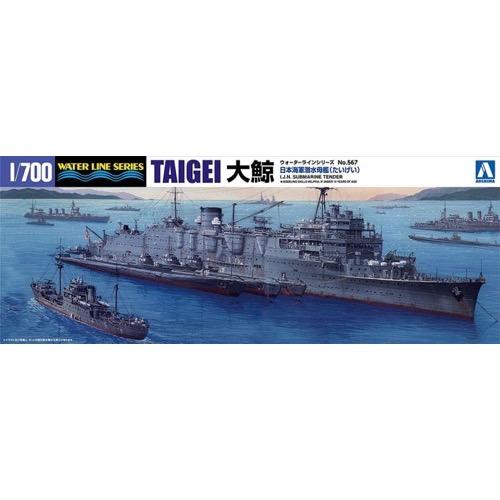
Aoshima A005183 1/700 IJN Submarine Depot Ship Taigei
23.00
$
<p>Taigei was a Japanese submarine tender from the interwar period and World War II. The keel for this unit was laid in April 1933, launched in November of the same year, and commissioned in the Imperial Japanese Navy in March 1934. The length of the ship was 215.65 m, width about 19.6 m, and displacement - 14,400 tons. The maximum speed was around 18.5 knots, and it was armed with including a single 127 mm cannon and 40 mm and 25 mm anti-aircraft guns. Taigei was a kind of aftermath of the disarmament Treaty of 1930, which imposed displacement restrictions on major warships on the world's major navies. The Japanese fleet, striving to circumvent this treaty, decided to build in the 1930s large auxiliary units (eg Taigei), which, in the event of a war, could be relatively quickly converted into, for example, light aircraft carriers. Taigei too was designed and built according to this philosophy. It is worth adding that she was one of the first ships in the Japanese Navy to use electric welding on such a large scale. The ship, shortly after entering service, in 1934, was severely damaged by a typhoon, which in turn forced major repairs on the Taigei. From 1938 to 1940, Taigei supported the Japanese fleet's operations off the coast of China, thereby taking part in the 1937-1945 Japanese-Chinese War. At the very end of December 1940, Taigei reached the naval base in Jokosuce, where work began on its conversion into the Ryuho light carrier.</p>
<p>Aoshima's "Waterline" model-kit line has now been renewed with a higher level of precision! This is a 1/700-scale kit of the submarine carrier Taigei, a large auxiliary ship built to work with Japanese Navy submarines operating in the vast Pacific Ocean. The impressive hull, which is close to the size of a battleship, is simple and easy to assemble, and can be accurately reproduced with a parts configuration that keeps the main points down. In addition to various equipment such as high-angle guns and searchlights, a newly designed carrier-based aircraft has been added. Slide-molding is used to create dense precision; in addition to armaments such as destroyer main guns and machine guns, carrier-based aircraft and various equipment have also been updated. </p>
<p>This is an injection-plastic ship model kit.</p>
<h3>Includes</h3>
<ul>
<li>110cm signal searchlight</li>
<li>60cm signal searchlight</li>
<li>Type 89 12.7cm twin high-angle gun</li>
<li>Radial davit</li>
<li>Kure Type 2 Type 5 injection machine (aircraft catapult)</li>
<li>Anchor (large)</li>
<li>Chrysanthemum emblem (small)</li>
<li>12m fire launch</li>
<li>12m fireboat</li>
<li>11m fireboat</li>
<li>9m cutter</li>
<li>Type 94 water reconnaissance aircraft</li>
</ul>
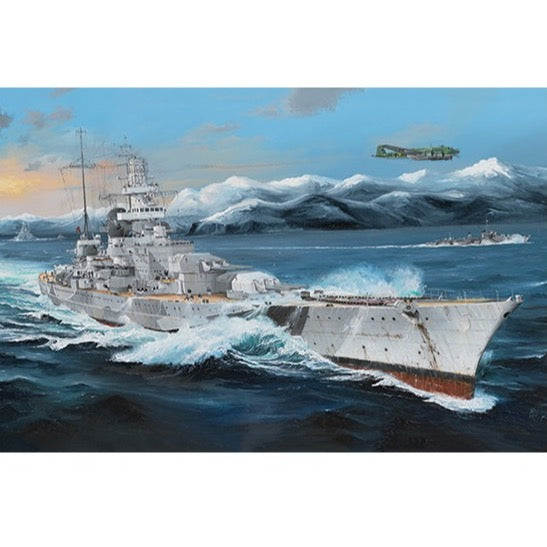
Trumpeter 03715 1/200 German Scharnhorst Battleship
220.00
$
<p>Battleship Scharnhorst is Scharnhorst class first ship, ship types are divided into battleship, the initial design can dress up as a 380 mm main gun battleship jumped to meet future war, but during World War II and not implemented. Scharnhorst was built by the War Naval Shipyard Wilhelmshaven, Germany, on October 3, 1936 launch, and began service in January 7, 1939.</p>
<p>In 1938, Scharnhorst found insufficient premium bow freeboard in the trials, docking bow refit in 1939. After the outbreak of World War II, in 1940 in the North Sea Scharnhorst premium sank two ships of the Royal Navy aircraft carrier Glorious and two destroyers, but Scharnhorst was hit by the British destroyer fired torpedoes and water, then drydocking repairs.</p>
<p>In 1941, the Scharnhorst broke into the Atlantic Ocean, at sea and destroy operations. In the two-month operation co sunk 22 merchant fleet, with a total tonnage of 11,5000 tons, greatly damaged the Allied shipping.</p>
<p>December 25, 1943, Scharnhorst sailed convoy attack allies, suffered the main fleet of the Royal Navy battleship Duke of York lead to the interception, was to attack the British, was eventually sunk by Duke of York.</p>
<h3>Features</h3>
<ul>
<li>One-piece hull made from two-directional slide molds</li>
<li>Deck pattern finely rendered.</li>
<li>Accurately detailed gun</li>
<li>6 pieces of photo etched frets for handrais,ladders , radar parts etc.</li>
<li>includes 2 Ar196 waterplane</li>
</ul>
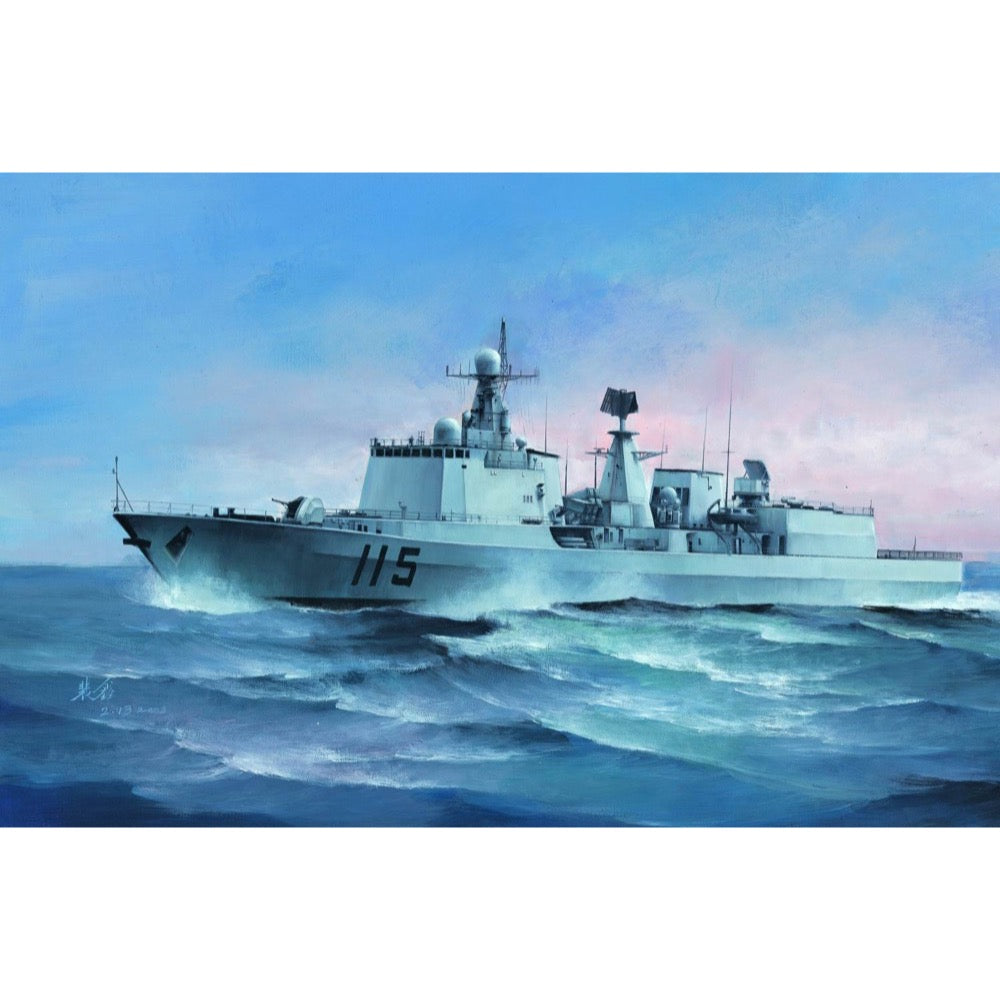
Trumpeter 04529 1/350 CHR DDG-115 Plan TP051C
27.00
$
<h3>Trumpeter 04529 1/350 CHR DDG-115 Plan TP051C</h3>
<p>The overall design of 115 Shenyang/116 Shijiazhuang Guide Missile Destroyer looks like an enlarged Project 051B DDG. It features the RIF-M vertically launched SAM system ordered from Russia. A total of 48 missiles are housed in 6 revolver launchers. The missile has a range of 120km. Its fire control radar is Top Plate phased array radar which can direct 12 missiles to engage 6 targets simultaneously. In addition to the RIF-M SAM system, A total of 8 YJ-83 launchers are installed, two Type 730 CIWS are installed at midship.</p>

Trumpeter 06710 1/700 German Navy Aircraft Carrier DKM Peter*
33.00
$
<p>The second aircraft carrier of the proposed Zeppelin class, ship ‘B’, might have been named Peter Strasser after the First World War German airship chief commander, had the carrier been finished. </p>
<p>Construction commenced at Friedrich Krupp Germaniawerft shipyard at Kiel in 1938, but a combination of disputes between the Kriegsmarine and German Air Force, the subsequent outbreak of World War II, and Hitler's decision to divert a large part of the Navy's funds to the development of submarines led to further work being abandoned in 1940 and ship ‘B’ was never completed. </p>



